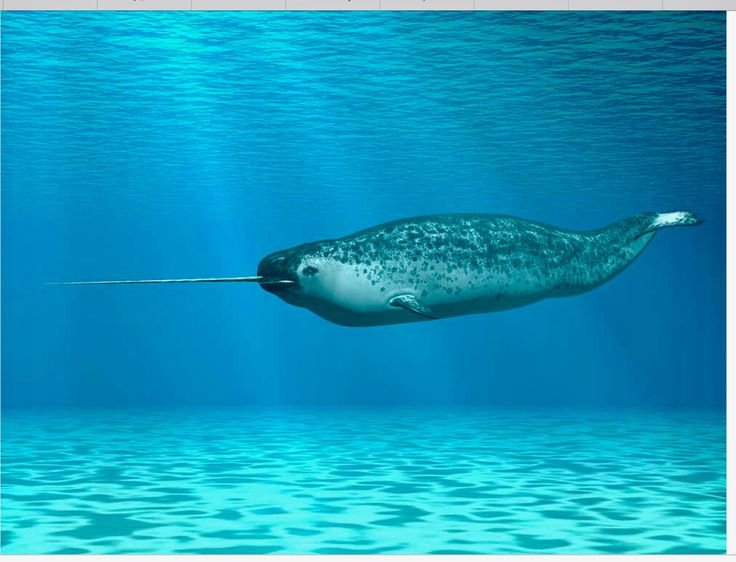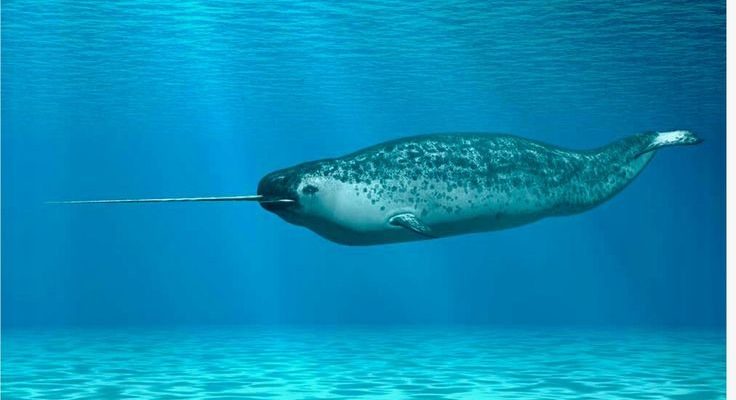
The narwhal’s diet mainly consists of fish and squid, but it’s not as straightforward as it might sound. Just like you might dive into a buffet and choose different dishes depending on your mood, narwhals select their meal based on what’s available in their icy habitat. Their feeding habits are shaped by the changing seasons and the availability of prey, which keeps their diet varied and nutrient-rich. Let’s explore the diet and feeding strategies of the narwhal in more detail.
Understanding Narwhal Diet
Narwhals primarily feast on a variety of fish, squid, and shrimp. Some of their favorite snacks include Arctic cod, halibut, and different species of squid. Just like you probably have a “go-to” order at your favorite restaurant, narwhals have their preferences too. The Arctic cod, for instance, is a staple in their diet, providing essential nutrients that help them flourish in cold waters.
One interesting characteristic of narwhals is their ability to dive deep into the ocean. They can reach depths of over 1,500 meters (about 4,920 feet) while hunting. This impressive diving capability allows them to access a range of prey that other marine animals might not reach. Imagine diving into the depths of a pool to discover hidden treasures—this is how narwhals explore their underwater world.
Their unique feeding approach also includes *gulping* down prey whole, a bit like how you might take a big bite of a favorite sandwich. This method allows them to consume large quantities quickly, which is essential when food is scarce.
Feeding Techniques
Narwhals have developed fascinating feeding techniques that suit their icy environment. One common method is *deep diving*, where they swim to the ocean floor, using echolocation to locate schools of fish. This natural sonar skill is essential for detecting prey in murky waters, helping them navigate the darkness and find food efficiently.
Once they spot their prey, narwhals use their mouths to *suction* in fish or squid. Their flexible jaws and rows of sharp teeth make it easier to latch onto slippery snacks. It’s like using a straw to sip up your favorite drink—effective and practical!
Additionally, narwhals can be seen *herding* fish into tight groups, making it easier to catch them. It’s a bit like how friends might corral their group at a concert; they don’t want to lose track of what they’re after. Working together in pods (groups of narwhals), they increase their chances of a successful hunt.
Seasonal Changes in Diet
The narwhal’s diet shifts with the seasons, much like how our food choices might change from summer salads to hearty winter stews. In summer, when the ice melts, they have access to a wider variety of fish and squid, while during the winter, they often rely more on what’s available under the ice.
In summer, they might gorge on abundant schools of fish like Arctic cod or capelin. As winter arrives and ice begins to cover the ocean, their options narrow, requiring them to be strategic in their hunting. This changing environment shapes their feeding habits, highlighting their adaptability and resilience in the face of seasonal challenges.
During times of limited food availability, narwhals can adjust their foraging behavior. They may travel greater distances or dive deeper to find a meal, showing just how resourceful they can be. It’s a reminder of the lengths we sometimes go to when our favorite food is out of reach!
The Role of the Tusks
Now, you might be wondering about that iconic tusk. The narwhal’s tusk, which is actually an elongated tooth, serves several purposes. While it’s not directly involved in feeding, it plays a role in mating displays and social interactions. Imagine it as a conversation starter in the narwhal world!
Some scientists believe that narwhals may use their tusks to sense their environment or even help them in hunting. The tusk has nerve endings that may detect changes in water pressure, aiding narwhals in navigating their surroundings. So, while it might look like a fancy piece of jewelry, it’s actually quite functional in their world!
Additionally, males tend to have longer tusks than females, often leading to displays of dominance during mating season. It’s a fascinating example of how appearance can play a significant role in social behavior among animals.
Impact of Climate Change on Feeding Habits
Like many Arctic species, narwhals face significant challenges due to climate change. The warming temperatures result in melting ice, altering their habitat and affecting their feeding habits. As the ice shifts, it impacts the location and availability of prey, which can lead to changes in their diet.
With ice cover diminishing, narwhals might find themselves searching for food in unfamiliar territories. This can lead to increased competition for resources, as other marine species may also enter these areas. Imagine moving to a new neighborhood where everyone fights for the same grocery store; it can get a bit tense.
Furthermore, changes in water temperature and salinity could affect fish populations. If their favorite snacks become less abundant, narwhals may struggle to adapt, making their survival even more precarious. This situation highlights the interconnectedness of ecosystems and the impact of environmental changes on delicate marine life.
Conservation Efforts for Narwhals
As we learn more about the narwhal’s diet and feeding habits, it becomes clear that conservation efforts play a vital role in ensuring their survival. Protecting their habitat is essential to maintaining healthy fish populations and preserving the delicate balance of the Arctic ecosystem.
Organizations focused on marine conservation work to study narwhal populations, monitor their habitats, and advocate for policies that reduce the impact of climate change. Every little effort counts, like a net holding together our shared environment.
You can also help by supporting sustainable seafood choices and being mindful of your carbon footprint. It’s a way to contribute to a healthier planet for not just narwhals, but all Arctic wildlife. Together, our actions can foster a future where these magnificent creatures continue to thrive.
The narwhal’s diet and feeding habits are a remarkable reflection of its adaptability and resilience in the face of changing environments. From deep diving for fish to navigating seasonal shifts, these fascinating creatures demonstrate how life thrives in the Arctic’s icy waters. As we gain a deeper understanding of their feeding behaviors, we can better appreciate the importance of protecting their habitats for future generations.
Honestly, the world of narwhals is full of surprises. Their unique tusks, varied diets, and feeding techniques remind us that nature is both complex and wondrous. So next time you hear about narwhals, you’ll know they’re not just unicorns of the sea; they’re skilled hunters relying on a rich tapestry of food sources to survive. Let’s work together to ensure these amazing creatures continue to share our planet and inspire us all.

